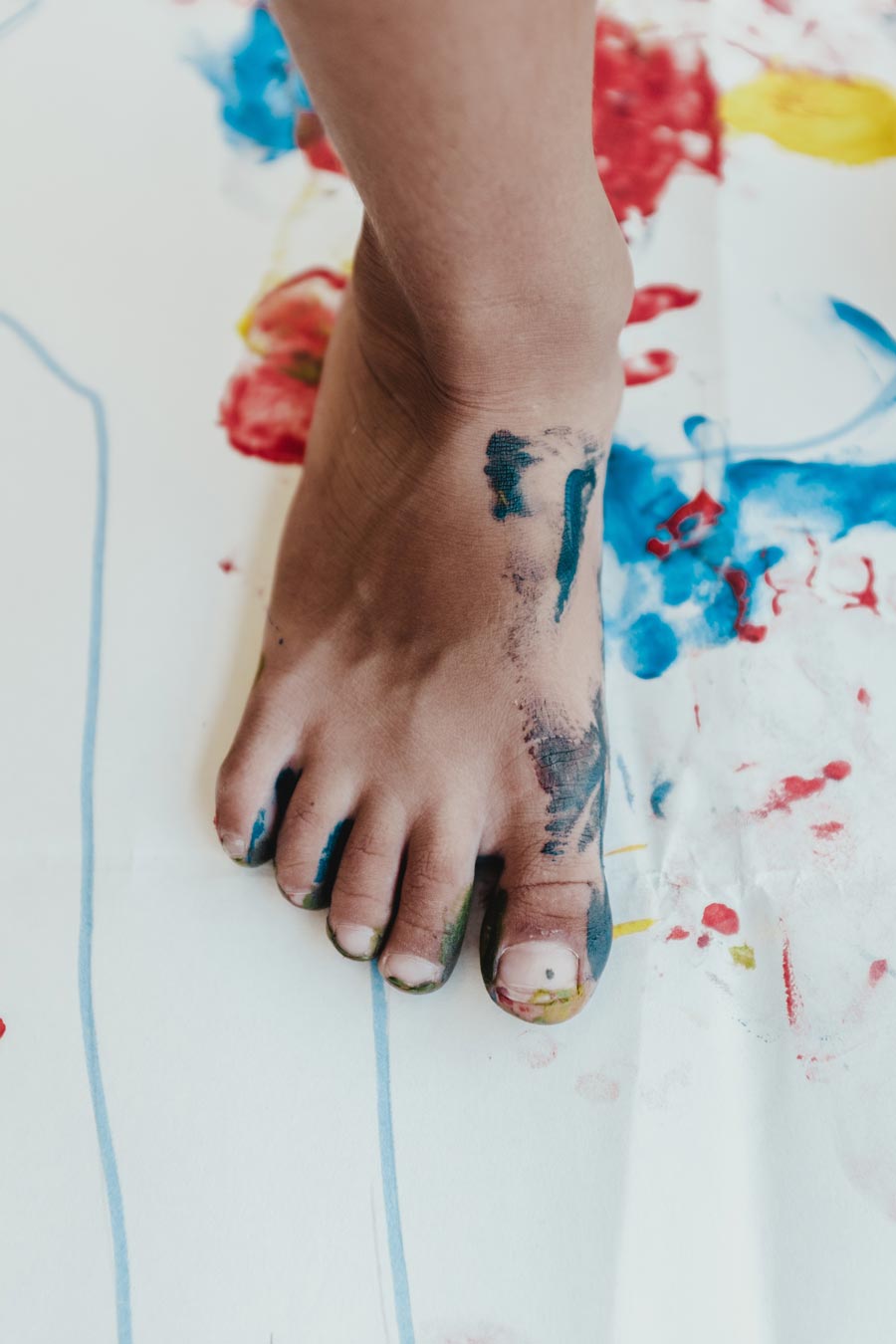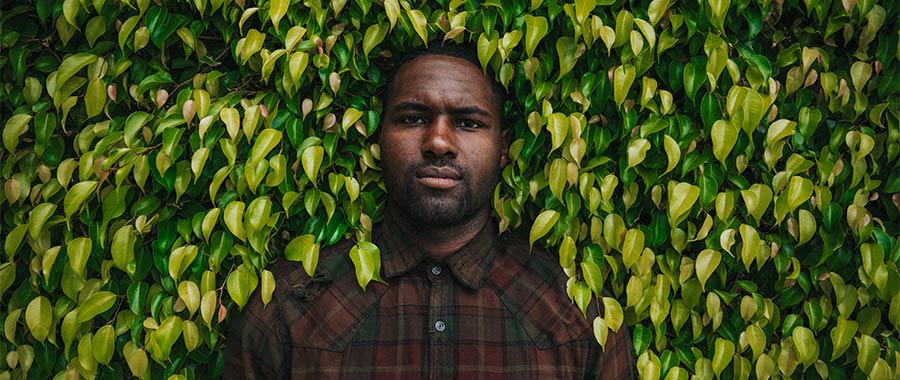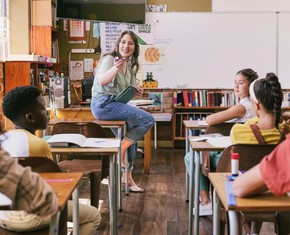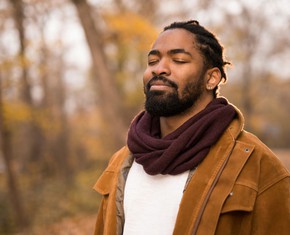The views expressed in our content reflect individual perspectives and do not represent the authoritative views of the Baha'i Faith.
Somewhere, in the stifling south Florida heat, in the summer of 1974, sits a small child in the back of an idling red Datsun 510. He is maybe five or six.
 His neatly combed afro, Michael Jackson like, glistens in the Miami sun. His large brown eyes stare in wide-eyed wonder at the world around him, the yellow arches of the neighborhood MacDonald’s, the cool kids on skateboards weaving in and out of pedestrian traffic, girls playing Double Dutch in an empty driveway.
His neatly combed afro, Michael Jackson like, glistens in the Miami sun. His large brown eyes stare in wide-eyed wonder at the world around him, the yellow arches of the neighborhood MacDonald’s, the cool kids on skateboards weaving in and out of pedestrian traffic, girls playing Double Dutch in an empty driveway.
In his tiny hands he holds his battered G.I. Joe doll, the bearded black one with the Kung Fu grip. In the front seat sit a man and a woman. The man—an older, darker version of the boy—grips the leather-bound steering wheel tightly, the veins in his forearms rising like surging rivers. The woman’s slight frame shifts restlessly in the passenger seat. She is shouting. Something is wrong. The boy watches as the man’s right arm, bound at the wrist by a gold-plated Timex, uncoils like a whip, striking the woman. Her lip flares like a sprouting flower—a blossoming rose, and then a trickle of blood. Somehow, the child knows, the world will never be the same.
Since from every thing an effect becometh manifest, a fact that none can deny save those who are bereft of reason and understanding, it is certain that the sighs of these children and the cries of these wronged ones will have their due consequence. – Baha’u’llah, The Summons of the Lord of Hosts, p. 161.
I am forty-nine years old now, well ensconced in the middle years of my life, yet this memory still forms a clear and vivid image in my mind. Time, distance, and the accumulation of lived experience have not diminished its lucidity, nor divested it of its power to move me. It represents a dispossession—the loss of something ineffable I am only now coming to understand.
There are moments, fleeting and intermittent, when I feel myself drawn back there, and the grief for what was left behind haunts me. Amongst some Gullah Geechee communities of the Georgia sea islands, the phrase used to refer to one’s parents is “low world gods.” I first heard this deceptively simple, profoundly resonant term while conducting research on Sapelo Island for an artist’s residency based in Savannah, Georgia in the winter of 2015. The belief is that for the child, the parent is the mediator of needs in the “low world,” as God mediates our needs in the “high world.”
But where does one go when that trust has been breached? How does the child learn to rely on the “greater God” when the parental “lesser gods” fail to honor the requirements of their high station?
A rupture, according to the dictionary, is “to cause a breach or bursting of, as in the rupture of the earth’s surface.” Some experiences, particularly those marked by trauma, can trigger a kind of psychological rupture in the brain that can affect cognitive and emotional health in adverse ways. This is especially true for children, whose developing minds lack the ability to fully process, comprehend, and interpret the motivating factors at the root of violence and abuse.
In an article published in the online magazine World Medical News in 2017, the writer Mary Cohut cites research conducted by the United States Department of Health and Human Services which suggests that “… trauma in childhood leaves deep marks giving rise to issues including post-traumatic stress disorder, depression, anxiety, and substance abuse.” For me, this is not a theoretical supposition, but rather a living, breathing reality, a source of tremendous difficulty, and, in the context of the transformative power of the Baha’i teachings, a wellspring of creative inspiration.
I began drawing at the age of four—first as a response to a natural inclination, and then as an act of salvation—to find a way of surviving the volatility of my immediate surroundings. As a child, exposed to toxic forms of masculinity sometimes expressed in unpredictable and violent ways, I struggled to internalize an abiding sense of trust and certainty. The ground beneath my feet seemed to be in a perpetual state of flux, and I struggled to keep my footing. Creativity became a door for me—a way to access a world that existed in my imagination. With my number 2 Durolite pencils, and Hammermill office paper my mother brought home from the law office where she worked, I could shape a new reality. Pencil shavings, and crumpled pages of discarded renderings littered the floor of my tiny bedroom-pulpy carcasses of myth and meaning.
Abdu’l-Baha, the son of Baha’u’llah, the prophet and founder of the Baha’i Faith, spoke of the intrinsic link which binds the imagination to the soul:
These faculties are but the inherent properties of the soul, such as the power of imagination, of thought, of understanding; powers that are the essential requisites of the reality of man, even as the solar ray is the inherent property of the sun. – Abdu’l-Baha, Tablet to August Forel, p. 24.
For me, art had become a benevolent gift—a wedge between my circumstance and my dreams. My drawings took me to distant lands, and far away planets where adults didn’t yell, or beat each other up, and children always felt safe.
 As an art student in the 1990’s, I initiated an intense spiritual search that would eventually lead me to the Baha’i Faith. During this earnest period of search, provoked by a desire to discover an enduring truth at variance from the capriciousness that characterized my early life, I began to realize the creative power of the word of God—that although decades of focused study had refined my artistic skills significantly, my work was merely an approximation of reality.
As an art student in the 1990’s, I initiated an intense spiritual search that would eventually lead me to the Baha’i Faith. During this earnest period of search, provoked by a desire to discover an enduring truth at variance from the capriciousness that characterized my early life, I began to realize the creative power of the word of God—that although decades of focused study had refined my artistic skills significantly, my work was merely an approximation of reality.
I could draw, paint, carve wood, and bend steel with the intention of revealing some essential quality of the soul, yet my best efforts would ultimately only constitute an intimation of the spirit.
As I read the teachings of Baha’u’llah, reflecting on the inner mysteries within them, my heart pierced by the penetrating influence of their subduing power, I realized that the writings of God’s messengers are invested with a unique creative capacity. Through them they draw brushstrokes of nobility on the faces of the demeaned and the downtrodden; they carve courage and fortitude into the heart of the fearful, and they recast the character of the abased, to reveal the dignity of his creation. This promise of healing and transformation, so essential an element of revealed religious truth, awakened in me a quiet hope that despite the neglect and abuse I had experienced, the distrust I harbored for the world and of God, there nevertheless existed within the holy writings the seed of change:
O wayfarer in the path of God! Take thou thy portion of the ocean of His grace, and deprive not thyself of the things that lie hidden in its depths. Be thou of them that have partaken of its treasures. A dewdrop out of this ocean would, if shed upon all that are in the heavens and on the earth, suffice to enrich them with the bounty of God, the Almighty, the All-Knowing, the All-Wise. With the hands of renunciation draw forth from its life-giving waters, and sprinkle therewith all created things, that they may be cleansed from all man-made limitations and may approach the mighty seat of God, this hallowed and resplendent Spot. – Baha’u’llah, Gleanings from the Writings of Baha’u’llah, pp. 279-280.
My initial steps towards a deeper awareness of the profound implications of the Baha’i Faith were augmented by the enduring love I received from the Baha’i community. Time and again they encouraged me, walked with me, believed in me, until slowly, steadily, I began to believe in myself. Love, offered without expectation or reward, has an ameliorating quality. It mends our wounds, binds what is broken, and restores our trust in each other, and ultimately in God.
This synergistic energy, released through the holy writings, and through the community, beats at the heart of the core activities Baha’is are engaged in all over the world. Through children’s classes, junior youth empowerment programs, devotional gatherings, and study circles centered on the collective reflection on the Baha’i teachings, the spiritual character of local communities deepens, and the bonds of mutual support and interdependence coalesce into enduring connections.
You May Also Like
Comments

















Her blog features a series of profound insights on trauma. I hope this is helpful.